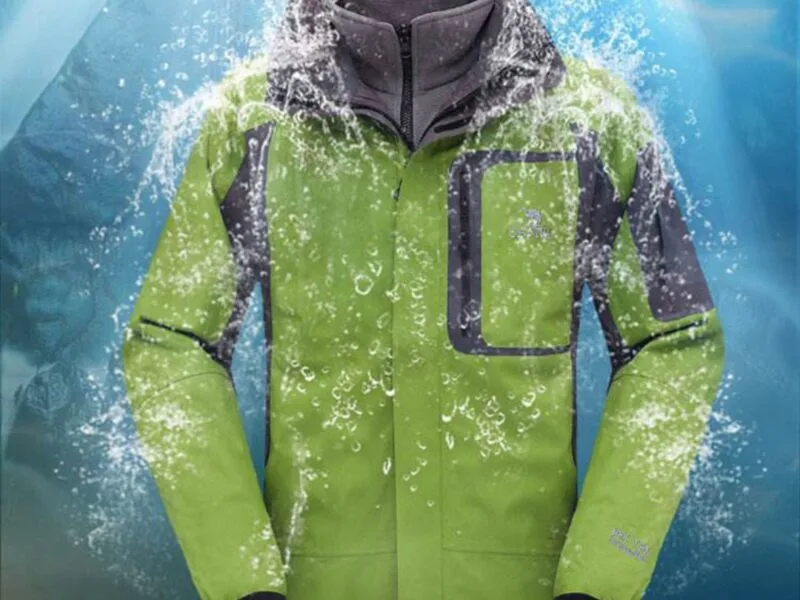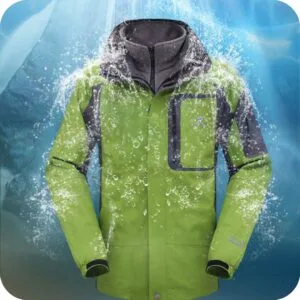
In the world of textile manufacturing, Waterproof Level 4 fabrics have become an essential part of daily life, with a wide range of applications across industries, from outdoor gear to medical textiles. Waterproofing technology has evolved significantly, pushing boundaries to develop fabrics that not only offer effective protection but also maintain their functionality after multiple washes. The innovative technology that allows fabrics to maintain a level 4 waterproof rating after five washes is a result of advanced treatments and fabric finishes. This article explores the intricate science behind this waterproof technology, the methods used to ensure durability, and how suppliers like fabrics-fty.com and textile-fty.com are at the forefront of these innovations.
Understanding the Waterproof Rating System/ Waterproof Level 4
Before diving into the technicalities of waterproof finishes, it’s essential to understand how the waterproof rating system works. Fabrics are rated for their resistance to water based on tests that measure their ability to repel water under pressure. The most common rating system uses the ISO 811 standard, which determines the level of waterproofing based on the pressure exerted before water penetrates the fabric.
•Level 1: Waterproof for light rain, typically under 500mm of water pressure.
•Level 2: Waterproof for moderate rain, with water resistance up to 1000mm.
•Level 3: Waterproof for heavy rain, able to resist up to 3000mm of water pressure.
•Level 4: The highest commonly used waterproof rating, capable of resisting up to 5000mm of water pressure.
Fabrics with a level 4 rating are ideal for use in outdoor jackets, raincoats, and gear, where durability and resistance to water are crucial.
The Challenge of Maintaining Waterproofing After Multiple Washes/ Waterproof Level 4
Waterproof fabrics are often treated with a variety of chemical or mechanical finishes to prevent water from seeping through. However, the challenge arises when these fabrics need to maintain their waterproof characteristics even after repeated washing. Typically, washing causes the waterproof coatings to break down, diminishing their effectiveness over time. This is where technology plays a pivotal role.
Waterproofing finishes can degrade after repeated washing due to physical abrasion, the impact of detergents, and the mechanical action of washing machines. To address this challenge, textile manufacturers employ specialized techniques that ensure waterproofing persists, even after five washes, without compromising the fabric’s breathability, texture, or comfort.
Methods of Waterproofing Fabrics/ Waterproof Level 4
There are several methods employed in the textile industry to achieve high-performance waterproofing:
1. Durable Water Repellent (DWR) Coatings/ Waterproof Level 4
One of the most common methods for waterproofing fabrics is applying a Durable Water Repellent (DWR) coating. DWR coatings form a thin layer on the fabric surface that causes water to bead up and roll off the material. These coatings are typically made from fluoropolymers, which create a hydrophobic surface. However, DWR coatings can wear off with washing, especially after several cycles.
To maintain the waterproof rating after five washes, advanced DWR treatments are used. These treatments utilize more durable, long-lasting fluorocarbon or silicon-based finishes that provide superior water repellency. Manufacturers like fabrics-fty.com focus on creating DWR coatings that have enhanced resistance to washing and abrasion, ensuring that fabrics retain their waterproof performance for a longer time.
2. Polyurethane (PU) Coatings/ Waterproof Level 4
Polyurethane coatings are another effective way of waterproofing fabrics. PU is applied as a liquid solution that bonds to the fabric, forming a continuous, flexible, and impermeable layer. Unlike DWR, PU coatings create a barrier within the fabric itself, offering a more robust waterproofing solution.
For fabrics to maintain a level 4 waterproof rating after five washes, manufacturers often use highly durable PU coatings that are resistant to wear and tear. These coatings also retain their breathability, which is essential for comfort in outdoor clothing, by allowing moisture vapor to escape while preventing water from penetrating.
3. Laminated or Coated Fabrics/ Waterproof Level 4
Laminated fabrics are created by bonding a waterproof membrane to the base fabric. This membrane can be made from materials like polyurethane, PVC, or PTFE (polytetrafluoroethylene). The laminated fabric creates an impermeable barrier against water while allowing air to pass through, ensuring comfort.
The key to maintaining waterproof performance after multiple washes is the bonding technique. High-quality manufacturers ensure that the membrane is firmly adhered to the fabric without delaminating over time. This type of fabric is commonly used in high-performance outdoor gear, such as jackets, tents, and boots.
4. Nanotechnology and Micro-Coatings/ Waterproof Level 4
Nanotechnology has revolutionized waterproofing treatments by introducing ultra-fine particles that provide superior water resistance. These nanoparticles are so small that they can penetrate the fabric’s surface, creating a barrier that repels water while still maintaining the fabric’s flexibility and breathability.
One of the major advantages of nanotechnology-based coatings is their ability to remain effective for longer periods, even after several washes. These finishes are less likely to be affected by physical abrasion, which ensures that fabrics maintain their level 4 waterproof rating.
Factors Affecting Waterproofing Durability/ Waterproof Level 4
While advanced finishes and coatings play a significant role in maintaining waterproofing after multiple washes, several other factors contribute to the longevity of waterproof fabrics:
1. Fabric Composition/ Waterproof Level 4
The type of fabric used plays a crucial role in its ability to retain waterproofing treatments. Synthetic fabrics, such as polyester, nylon, and polyurethane, are typically more resistant to moisture penetration than natural fabrics like cotton. These materials provide a stable foundation for waterproof finishes, ensuring better durability.
Fabrics that are woven tightly, with a higher density of threads, are also more likely to maintain their waterproof rating. High-density woven fabrics have fewer gaps through which water can penetrate, making them more effective at repelling water.
2. Washing Conditions/ Waterproof Level 4
The way a fabric is washed also impacts its waterproofing performance. Harsh detergents, high temperatures, and excessive agitation can break down waterproof coatings faster. Fabrics treated with advanced waterproofing technologies can withstand more washing, but using mild detergents and cold water is always recommended to prolong their effectiveness.
For manufacturers like textile-fty.com, the focus is on developing fabrics that are not only resistant to water but can also withstand the mechanical forces encountered during washing cycles, including friction and tumbling.
3. Reproofing and Maintenance/ Waterproof Level 4
After a few washes, the waterproofing effect can begin to diminish, especially for DWR-coated fabrics. Fortunately, many waterproof fabrics can be reproofed at home using DWR sprays or washes. These products restore the fabric’s water-repellent properties, ensuring continued performance.
The Future of Waterproof Fabrics/ Waterproof Level 4
With advancements in technology, the future of waterproof fabrics looks promising. Researchers are exploring new materials, such as biodegradable waterproof coatings and self-healing fabrics that can repair minor damage on their own. The integration of smart textiles, which can monitor and adjust the waterproofing properties in real time, is also on the horizon.
Companies like fabrics-fty.com and textile-fty.com are continuously innovating to meet the growing demand for durable, high-performance waterproof fabrics. Their commitment to developing textiles that retain their level 4 waterproof rating after five washes ensures that consumers and industries alike have access to fabrics that combine durability, comfort, and functionality.
Conclusion/ Waterproof Level 4
The technology behind fabrics that can maintain a level 4 waterproof rating even after five washes is a remarkable achievement in the textile industry. Through a combination of advanced coatings, innovative materials, and high-quality manufacturing techniques, waterproof fabrics are becoming more durable and long-lasting. Whether for outdoor enthusiasts, athletes, or industries that require reliable performance, these fabrics provide an essential solution. As companies like fabrics-fty.com and textile-fty.com continue to push the boundaries of textile technology, the future of waterproof fabrics looks brighter than ever.
#WaterproofFabrics #DurableWaterproofing #FabricsFTY WaterproofingTechnology #PUCoatedFabrics #NanoCoatings #DWRCoating #WaterRepellentTextiles #OutdoorGear #FabricsInnovation #SustainableWaterproofing

